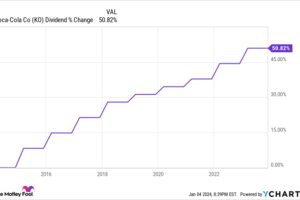
Inflation data may no longer be the big catalyst for stocks that it once was.
U.S. stocks bounced around to a higher close on Thursday, even though investors received some encouraging inflation news after the consumer-price index for December showed its first monthly decline since the pandemic swept across the globe in 2020.
Considering that inflation has been one of the most consequential issues for markets over the past year, investors might have expected stocks to take off running.
Instead, after an earlier waiver, stocks finished Thursday with modest gains, the magnitude of which was much smaller than other recent CPI release days.
While the monthly CPI declined 0.1% in December, the annual gauge fell for the sixth month in a row to 6.5% from 7.1%. That’s the lowest level in more than a year and down from a 40-year peak of 9.1% last summer.
To get a better sense of what led to such a muted reaction in stocks, despite the economic milestone, MarketWatch collected insights from market strategists on what happened.
The ‘whisper number’
Perhaps the main reason stocks greeted the CPI data with disappointment was that investors had positioned for inflation to fall even more aggressively. Some even hoped that the drop would be large enough to prompt the Federal Reserve to reconsider more interest-rate hikes.
Ahead of the CPI data for October and November, economists had actually underestimated the degree by which price pressures would recede, on a year-over-year basis. And as prices for goods like used cars and for oil and other commodities declined late last year, traders anticipated they might be too conservative again in December.
As a result, a “whisper number” shared among markets professionals suggested that core inflation — which is the Fed’s main focus — would slow even faster than economists were expecting, according to Bill Sterling, global strategist at GW&K Investment Management.
Instead, the core level, which omits volatile food and energy prices, rose 0.3%, matching the median forecast from economists polled by The Wall…
..






